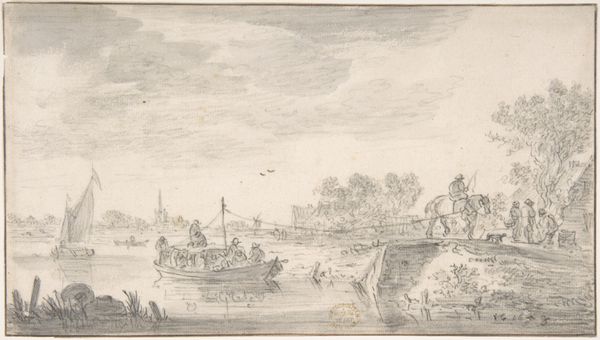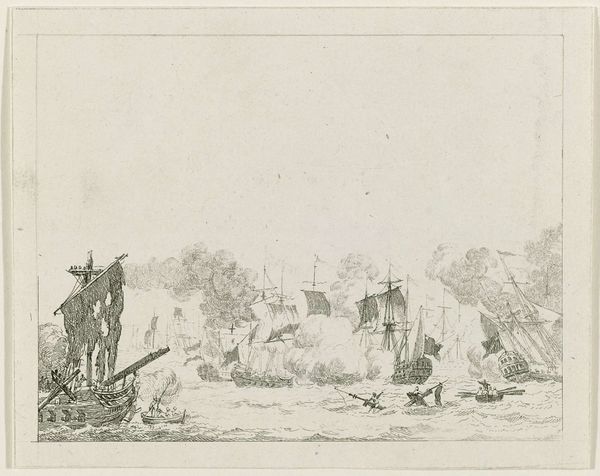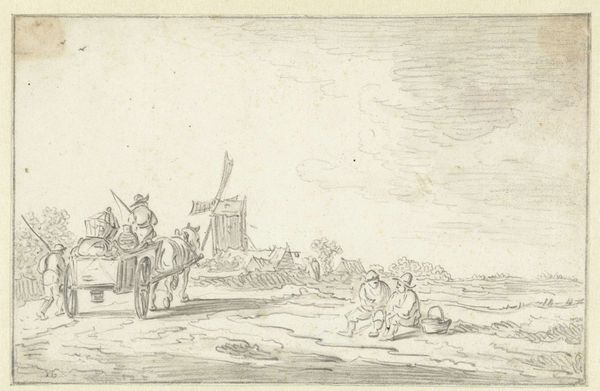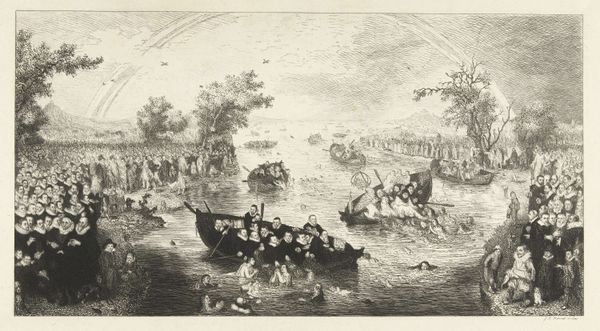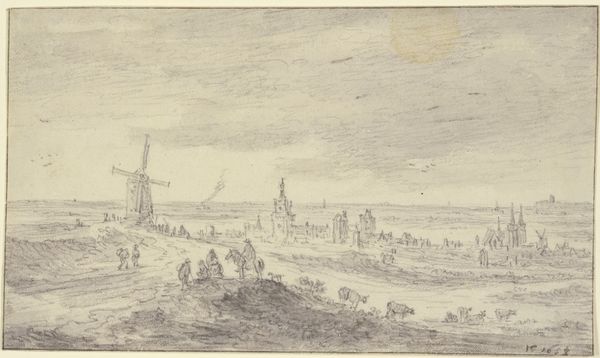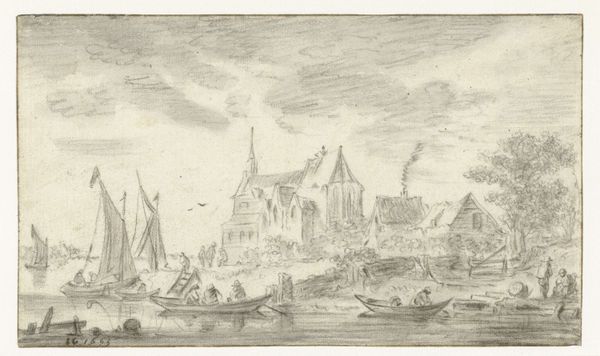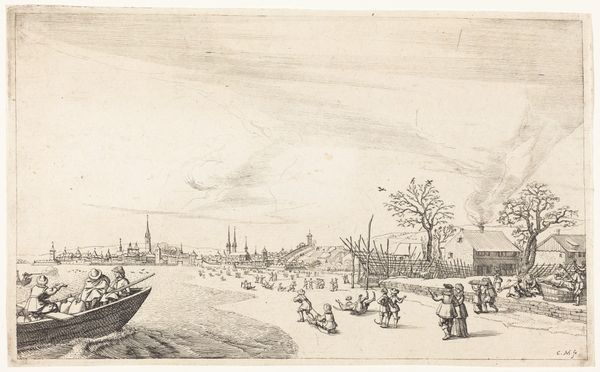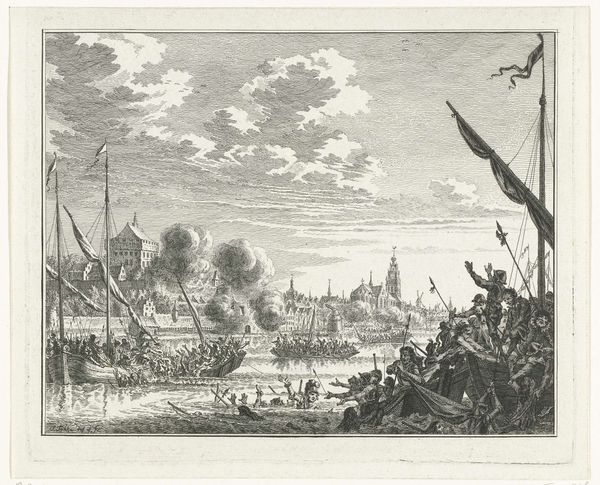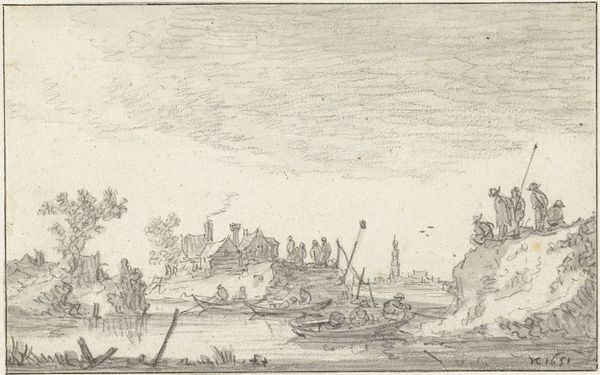
Zware storm en overstroming bij Halfweg, 15 november 1775 Possibly 1775
0:00
0:00
Dimensions: height 164 mm, width 208 mm
Copyright: Rijks Museum: Open Domain
Editor: We are looking at "Zware storm en overstroming bij Halfweg, 15 november 1775," attributed to Simon Fokke, potentially from that very year. It’s an etching and drawing. There’s something quite raw about the energy here; it feels like a snapshot of chaos. What strikes you first? Curator: The most compelling aspect lies in Fokke's deployment of line. Notice the nervous, frantic strokes used to depict the churning sky. The density shifts, creating a palpable sense of atmospheric pressure. Observe, also, how these strokes contrast with the more defined lines describing the architecture. Editor: It’s almost like the buildings are grounded in reality, while the sky is this ephemeral, dangerous force. Is that contrast intentional, do you think? Curator: Indeed, that interplay suggests a dialectic between human structure and natural force. Consider the composition as a series of contrasts: dark and light, stable and unstable, defined and amorphous. This reinforces the tension inherent in the subject matter. How does the medium, the pencil and etching, contribute to this? Editor: The pencil sketch quality adds a sense of immediacy, as though Fokke were sketching this live. It feels less staged and more urgent. Curator: Precisely. The etched lines, while offering structure, are subsumed by the overwhelming sketch work. The lack of strong tonal variation flattens the image, pulling the viewer into the immediacy of the event rather than creating a picturesque distance. The balance of textures and lines within the artistic whole makes a strong, formal statement. Editor: I see what you mean. It is less about picturesque beauty and more about the visual experience of the storm itself, achieved through these techniques. Thank you. Curator: An astute observation, I'm pleased to share it with you.
Comments
No comments
Be the first to comment and join the conversation on the ultimate creative platform.



